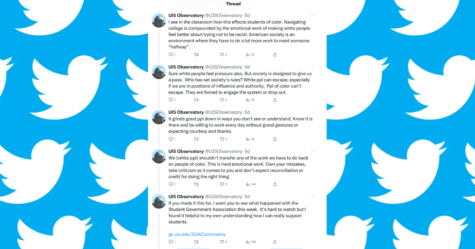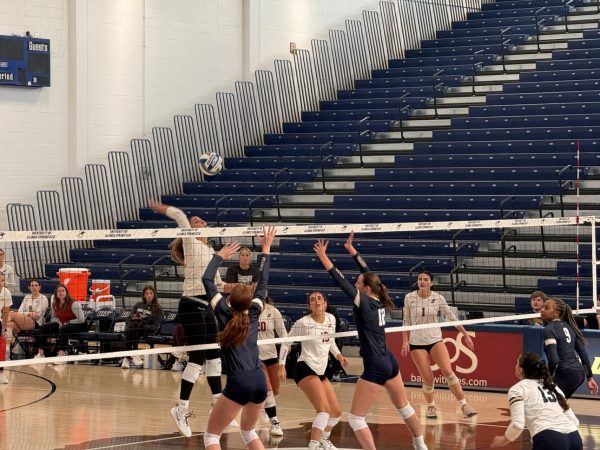What is Going on in Ukraine Explained
It is perhaps one of the most well-known stories in American news today. Russian troops, numbering over 100,000, have begun assembling at the Ukrainian border, and the Ukrainians, familiar with Russian tactics, have made preparations to protect their nation from an increasingly belligerent Russia. Indeed, American officials have warned that as many as 127,000 troops await orders along with 21,000 air and sea-based personnel. Just as COVID-19 has occupied the national attention, so too has a fear of an escalating conflict in Eastern Europe occupied the American mind. And while it is important to keep an eye on foreign affairs, the larger historical and political context of Ukrainian-Russian relations must remain central. Far from the sudden explosion of militarism, the actions by Vladimir Putin’s government are yet another example of longstanding tensions in Eastern Europe escalating beyond its initial participants.
Ukraine has had a complicated and somewhat contradictory history with Russia. Though movements calling for an independent Ukraine go back to the early 20th century with the Ukrainian People’s Republic, the nation of Ukraine would not come to be until 1991. Since it established its independence, Ukraine has had to balance its place between the influence of Western Europe and the Eastern influence of Russia. Caught between the dissolving Soviet Union and the seemingly victorious western powers, Ukraine established itself as a pragmatic and self-reliant political force, albeit through great difficulty. Its Declaration of State Sovereignty promised to relinquish its nuclear arsenal –which it got from the Soviet Union– and to remain a neutral power.

However, denuclearization would remain a controversial decision for years to come. It maintained relations with Russia and its former Soviet states, but it also signed a peace partnership with The North Atlantic Treaty Organization (NATO) in 1994, signaling more amicable relations with the western alliance. Over the years, Ukraine remained on peaceful terms with Russia and the rest of Western Europe, though tensions remained. By 2002, Ukrainian officials announced an official bid to become part of NATO. However, the process would later be rescinded in 2010 under then-President Victor Yanukovych, who critics saw as Pro-Russian. By 2013, those tensions would come to a head, with Yanukovych killing an association deal with the European Union. In response, Ukrainians, particularly in the western regions, rose up against the Ukrainian president in protest. Hundreds of thousands of people marched throughout the country, supporting cooperation with Europe. Though Eastern Ukrainians were not as supportive, with many in Donetsk raising concerns about joining the E.U. By 2014, Yanukovych fled to Russia, and the nation’s parliament ousted him.
An interim government took power and initially refused to support entrance into NATO. But after the Russian invasion of Crimea in February of that same year, relations broke down, as Russian Vladimir Putin attempted to establish influence over Crimea and the Donbas region. Russian troops, with their insignias removed, illegally occupied and annexed Crimea. In a March speech, Putin claimed that the people of Crimea were robbed from Russia after the Soviet Union’s dissolution and that NATO’s eastward expansion merited the annexation. He further asserted there is “no legitimate executive authority in Ukraine.”
However, many Ukrainians and scholars firmly disagree. In an interview with The UIS Observer, Dr. Adriana Crocker, a professor of Global Studies at the University of Illinois Springfield, pushed back on that narrative. “Ukraine is an independent, sovereign country…” she said. “They should have the right to decide their future. Whether to be with the E.U., whether to be with NATO… should not be part of Russian decision-making. It is an internationally recognized sovereign country.”
To an extent, Ukraine’s association with other countries and alliances is central to Russian interventionism, with Putin arguing that NATO officials promised to avoid expanding eastward and has demanded that Ukraine never enter the alliance. Such a narrative by Russia, says Dr. Crocker, ignores the complex process of getting into NATO in the first place and does not justify the use of its military.
But it does fit a pattern of behavior, says Dr. Christopher Budzisz, a professor of political science at Loras College. With the current deployment of well over a hundred thousand troops at the border of Ukraine and in countries like Belarus, Ukrainians face a different experience from the one traditionally described by American and western media. “They [Ukraine and Russia] have been in a state of conflict–both armed and otherwise– for years and years and years now… and it has taken the lives of thousands and thousands of Ukrainians.” Since the invasion in Crimea, Ukrainian-Russian relations have developed into an open state of war, with between 42,000 and 44,000 Ukrainians killed or wounded in the conflict. Between 13,100-13300 Ukrainians have died and an estimated 29,500-33500 have been wounded since the conflict began. The bloodshed has been a fact of life for years now.
With this rapid evolution of information and continued struggle, narratives tend to form, Budzisz warns. “If you look at Russian internal media, NATO is the aggressor. Ukraine is a threat to the territorial sovereignty of Russia. Ukraine is imminently going to join NATO, park strategic nuclear weapons at the border, and attempt to destabilize Russia.” Indeed, Putin has repeatedly claimed–both during the invasion of Crimea and in the present build-up of military forces–that the United States that NATO would not expand eastward. That narrative is squarely rejected by both the United States and by NATO. The argument by Russia is largely based on negotiations that occurred in February of 1990, in which the United States, Russia and the eventually unified Germany, attempted to ascertain what a post-Soviet Germany would be like. Russian officials claim that during that meeting then Secretary of State James Baker promised that the U.S. and NATO would not expand. However, Baker’s comments were specifically focused on troops in Eastern Germany, something that Mikael Gorbachev, who took part in the negotiations for the Soviet Union, now confirms this. In an interview with Beyond Russia, Gorbachev noted “The topic of “NATO expansion” was not discussed at all, and it wasn’t brought up in those years. I say this with full responsibility. Not a single Eastern European country raised the issue, not even after the Warsaw Pact ceased to exist in 1991. Western leaders didn’t bring it up, either.”
The fear of NATO, in other words, is a powerful narrative tool that can obscure the larger pattern on display. As Dr. Budzisz notes, this is not the first time that Russia has utilized its forces to maintain its influence along its borders. Russia has deployed its forces in Moldova in a region known as Transdniestria. It has occupied territory in Georgia, thanks to its invasion in 2008. The European Parliament official declared the Russian position in Georgia as an occupation. Far from being solely about NATO, the use of military force is a part of Russian foreign policy when its influence fails.
While that influence has worked on smaller countries, it is unlikely that Russia will invade with its current troop counts and the increased military presence of American and possible NATO forces in Eastern Europe, Russia will have to come to terms with the risk of its current movements. And as diplomatic talks continue, the Ukrainian people and government may find a way to maintain its independence but the problems it faces from Russia will likely remain.
Due to an error in translation of source material, a previous version of this article stated that 42,000-44,000 people had been killed so far in the conflict. This has been corrected to reflect the actual numbers.












